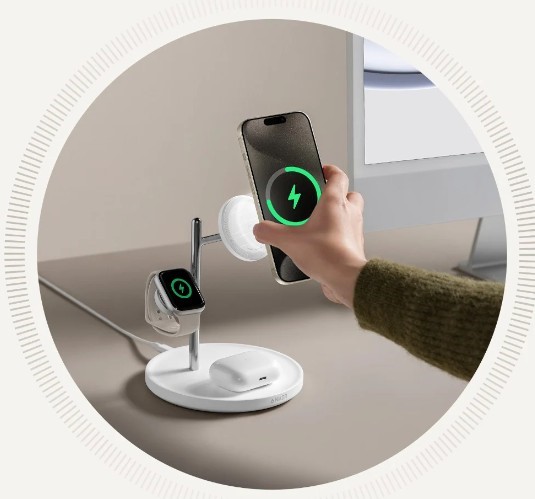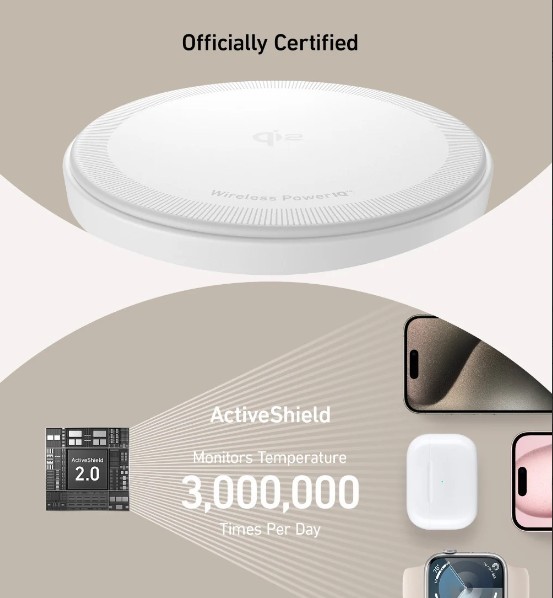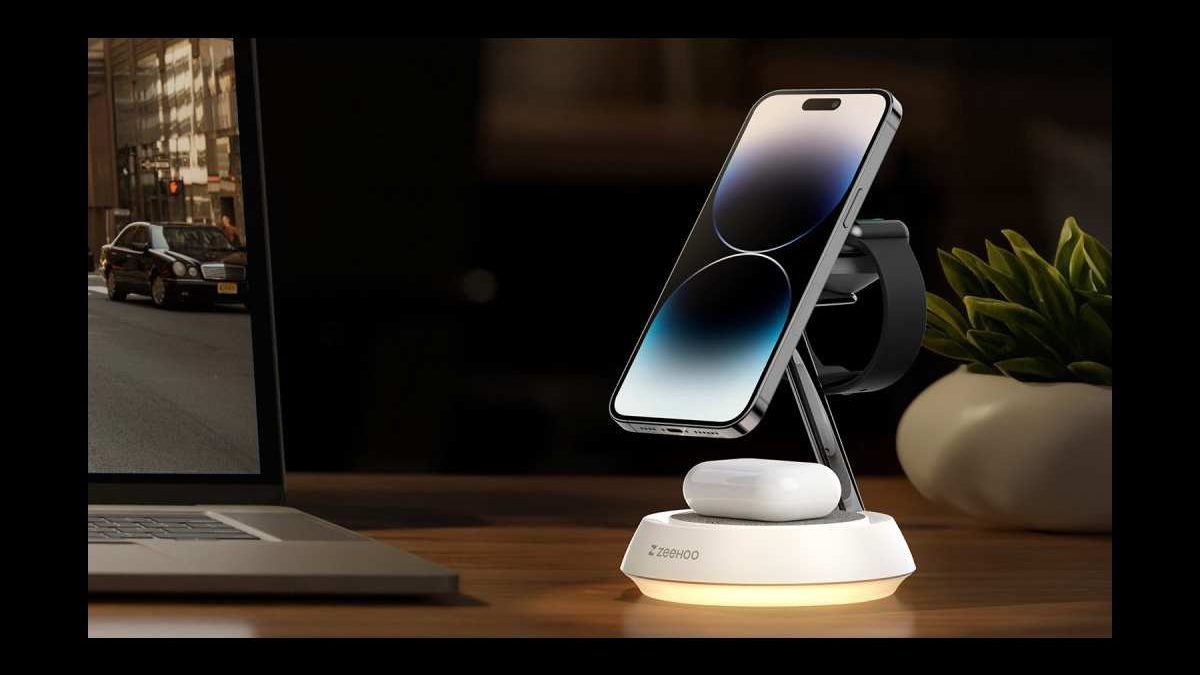Devices such as cellphones, earphones, and smartwatches may be easily and quickly charged using wireless technology. Removing the need for bulky wires has revolutionized charging, allowing us to effortlessly keep gadgets fueled with little effort at all. However, optimizing your wireless charging experience involves understanding factors such as device compatibility, charging pad quality, and external elements like temperature. You can build a charging system that works better and lasts longer if you know about these factors. Read this guide to learn about the factors that affect wireless charging and to get the most out of your wireless charging experience—in terms of speed, safety, and efficiency.

Table of Contents
What Affects Your Wireless Charging Speed?
Device Compatibility and Charging Speed
The effectiveness of wireless charging might vary from one gadget to another since not all of them support the same rates. To ensure maximum efficiency, MagSafe’s magnetic alignment mechanism coordinates the charging device and the device precisely. With Qi2 certification, the MagGo Wireless Charging Station from Anker is compatible with a wide range of devices and guarantees a fast and dependable charge. You may greatly enhance your charging experience by investing in compatible, high-quality chargers like these.
Charging Pad Placement and Alignment
The key to successful wireless charging is getting your smartphone in the right spot relative to the charging station. If the device is not properly aligned, charging may be slowed down or stopped altogether. By magnetically aligning, Apple’s MagSafe chargers make this procedure easier and guarantee that compatible iPhones immediately snap into position for constant operation. Users who find manual adjustments tedious would especially benefit from this. The MagGo station and other Anker wireless chargers provide magnetic alignment for MagSafe devices, guaranteeing proper alignment of Qi and MagSafe-enabled devices. When you place it correctly, you may avoid energy loss and enjoy quicker more uninterrupted charging.
External Factors: Temperature and Surface
The charging pad’s effectiveness is susceptible to environmental factors, including surface temperature and humidity. Overheating, which may happen in hotter places or on surfaces that retain heat, can reduce the charging rate and even damage the device’s battery. To keep performance at its best, charge in cooler places and utilize surfaces that dissipate heat. Thanks to its ActiveShield 2.0 technology, the MagGo wireless charging station from Anker never overheats, allowing for safer and quicker charging. Your device’s battery will remain healthy and last longer thanks to this system’s temperature management.
How Can You Improve Your Wireless Charging Setup?
Use the Right Charging Pad
If you want your wireless charging to work well, you need to have a good charging pad. If your device is MagSafe-enabled, then you need the MagGo Wireless Charging Station from Anker. It provides steady and dependable charging. A Qi2-certified module assures compatibility with a wide variety of devices, and a power level of 15W guarantees quick charging. Plus, it is stable thanks to its big slip-resistant cushion, so there is less chance of disruptions during charging. If you want your wireless gadgets to charge without a hitch, optimize their speeds, and avoid interruptions, choose chargers that adhere to the MagSafe or Qi2 standards.
Minimize Obstructions Between Device and Charger
Thick phone cases, in particular, might interfere with the wireless charging field, slowing down the charging process. Cases that are too thick or have metal reinforcements might hinder the charging process by blocking the charging field. If you want to use a case, be sure it supports wireless charging and does not include any metal parts. In order to ensure effective and dependable charging without any blockage, a thin MagSafe-compatible case is preferred. The charging coils are better able to align and maximize power transmission when there are fewer obstacles between the smartphone and the pad. Following these procedures will reduce interference, resulting in quicker and more reliable wireless charging.
Upgrade to Faster Wireless Chargers
A faster wireless charger is a great upgrade for anybody looking to enhance their charging experience. Anker’s Wireless PowerIQTM️ equipped MagGo Station is one example of a high-quality charger that can automatically adapt its power output to match the needs of each device, guaranteeing the quickest possible charging. This charger is a fast and efficient power source for iPhones that are MagSafe compatible, supporting up to 15W. Wireless charging is a dependable and hassle-free solution since faster chargers shorten the time it takes to get to 100% charge. If you want a wireless charger that works with all your gadgets and is efficient, then you should choose one of the best ones on the market.

Common Wireless Charging Mistakes to Avoid
Charging Through Thick Cases
It may be difficult for wireless charging to work with a heavy or metal phone case. Inconsistent or slower performance or interference with the necessary magnetic field for optimal wireless charging may occur in cases that are thicker or include metal components. You should either take the case off or choose one that is compatible with MagSafe and made for wireless charging. A more rapid and steady charging experience is possible thanks to an improved connection between the charger and the slimmer, wirelessly compatible case. By following this technique, you may avoid the hassle of interrupted charging, which will make the overall experience more efficient and pleasant.
Using Low-Power Chargers
Another typical problem with wireless charging is low-power chargers. Avoid wasting your device’s charging capacity by using a charger with an inadequate power output, which will significantly slow down the charging process. Ensure that the charger you select can accommodate a greater amount of power than your device requires in order to optimize the benefits of wireless charging. Among many examples, the 40W USB-C PD charger included with Anker’s MagGo charger ensures rapid and consistent charging. As a result, wireless charging is more efficient, and you will not have to deal with the sluggish charging that comes with lower-wattage chargers.
Overheating Your Devices
Your device’s battery life and charging efficiency are both compromised if it becomes too hot during charging. Overheating, which occurs when wireless charging occurs in warmer locations or on soft, heat-retentive surfaces, slows down the charging process. To keep your smartphone at the ideal charging temperature, place it on a firm, heat-dissipating surface. By constantly monitoring the device’s temperature, Anker’s ActiveShield technology in the MagGo charger prevents overheating, guaranteeing safe and efficient charging. This cautious approach improves the dependability of your wireless charging system by extending the life of the battery and keeping the gadget in good condition over time.
Conclusion
Knowing which accessories work with your smartphone and which ones do not is the first step in getting the most out of wireless charging. With features like magnetic alignment, temperature monitoring, and fast-charging capabilities, investing in high-quality chargers like Anker’s MagGo Wireless Charging Station may greatly improve efficiency and safety. You may improve your charging performance even more by avoiding typical mistakes like charging through thick casings or utilizing chargers with low power. If you follow these guidelines, wireless charging will be easier, more dependable, and safer for you, and your gadgets will be ready for anything.

